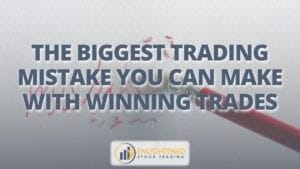Show Full Transcript
Hey, Adrian here. Have you ever been out a boat on a completely calm, quiet day where the ocean looks like this?
So right now I’m in the Island of Kauai, and we’re going on a snorkeling tour. We just saw a whole bunch of dolphins and it’s really, really amazing. But what strikes me as interesting about this is the captain said, “You couldn’t have asked for a more perfect day.” And it’s absolutely right. I mean, the ocean is just beautiful. It’s the deepest blue I’ve ever seen. It’s calm, the water’s nice and still, visibility is good, barely a cloud in the sky, so it’s fantastic day.
So if you’ve never been out on the ocean before or you haven’t been out very much, you’d be forgiven for thinking that it was this amazing calm place. And look, today is really fantastic. Loving it. But the captain’s just had a word to us and he’s talked about how rough it gets out here. And I’ll get to trading in a minute and why this is important, but check this out.
See the mast up there? The captain was telling us that the swell out here, particularly in the winter time can get as high or higher than the mast. So 30-40 foot swells and compared to today, this is basically zero. And so it can be really rough. But the trouble is you can’t predict that by looking at what you see right now. And the markets are the same. If you’re new to the markets and you’ve just started trading and you’re looking at the markets, in the last couple of years, it hasn’t really been that much volatility. There’s not that much kind of fear around. There’s been a few corrections, but nothing dramatic.
And so one of the biggest mistakes that you can make is assume that it’s going to be that way forever, because it’s not. All you need to do is go back and look at a long-term chart of the S&P 500 or the Dow or any of the indices, and you can see that there’s periods of time where the volatility skyrockets, where the market gets really, really choppy, where signals are trend-following or momentum signals just don’t work, because the markets are so choppy.
And so a big mistake is looking at the current market conditions and assuming that those will last forever. So if you’re new to trading, if you’re not as profitable as you want to be, then the first thing you need to do is click the link below and download my trading mistakes cheat sheet. Because we’ll talk about this and many other trading mistakes that new traders make, which holds you back from achieving long-term, consistent profitability.
And assuming the oceans are always going to be this calm, one of the most dangerous mistakes a sailor could make. Assuming the markets will always be this calm, one of the most dangerous mistakes you can make in your trading. So click the link below, download the trading mistakes cheat sheet. And I’m going to get back to staring at this beautiful ocean. See you in the next video. Bye for now.








Share This
Share this post with your friends!